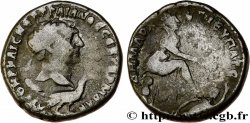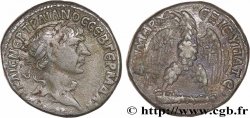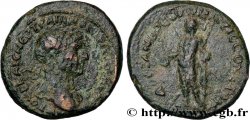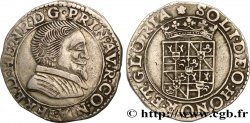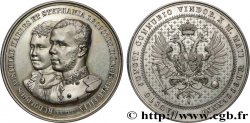Live auction - brm_753416 - TRAJANUS Sesterce
You must signin and be an approved bidder to bid, LOGIN TO BID. Accounts are subject to approval and the approval process takes place within 48 hours. Do not wait until the day a sale closes to register. Clicking on "BID" constitutes acceptance of the terms of use of cgb.fr private live auctions.
Bids must be placed in whole Euro amounts only. The sale will start closing at the time stated on the item description; any bids received at the site after the closing time will not be executed. Transmission times may vary and bids could be rejected if you wait until the last second. For further information check the Live auction FAQ
All winning bids are subject to a 18% buyer’s fee.
All winning bids are subject to a 18% buyer’s fee.
| Estimate : | 500 € |
| Price : | 460 € |
| Maximum bid : | 460 € |
| End of the sale : | 06 September 2022 15:04:11 |
| bidders : | 6 bidders |
Type : Sesterce
Date: 106
Mint name / Town : Roma
Metal : copper
Diameter : 34,5 mm
Orientation dies : 6 h.
Weight : 25,22 g.
Rarity : R1
Officine: 3e
Coments on the condition:
Monnaie sur un flan large, centré des deux côtés. Joli buste de Trajan. Revers agréable. Patine vert olive
Catalogue references :
Predigree :
Exemplaire provenant de la collection P-R B
Obverse
Obverse legend : IMP CAES NERVAE TRAIANO AVG GER DAC P M TR P COS V P P.
Obverse description : Buste lauré de Trajan à droite, drapé sur l’épaule gauche (O*2).
Obverse translation : "Imperatori Cæsari Nervæ Traiano Augusti Germanico Dacico Pontifici Maximo Tribuniciæ Potestate Consuli quinto Patri Patriæ" (À l'empereur césar Nerva Trajan auguste germanique dacique, Grand pontife, revêtu de la puissance tribunitienne, consul pour la cinquième fois, Père de la Patrie).
Reverse
Reverse legend : S P Q R/ OPTIMO/ PRINCIPI/ S C.
Reverse description : Légende en trois lignes dans une couronne de chêne.
Reverse translation : "Senatus Populus Que Romanus Optimo Principi" (Le Sénat et le peuple romain au meilleur des princes).
Commentary
Sesterce frappé à l’occasion des Decennalia. Ce type est daté par le chercheur autrichien de 107-108 tandis que P. V. Hill en place la fabrication en 106.







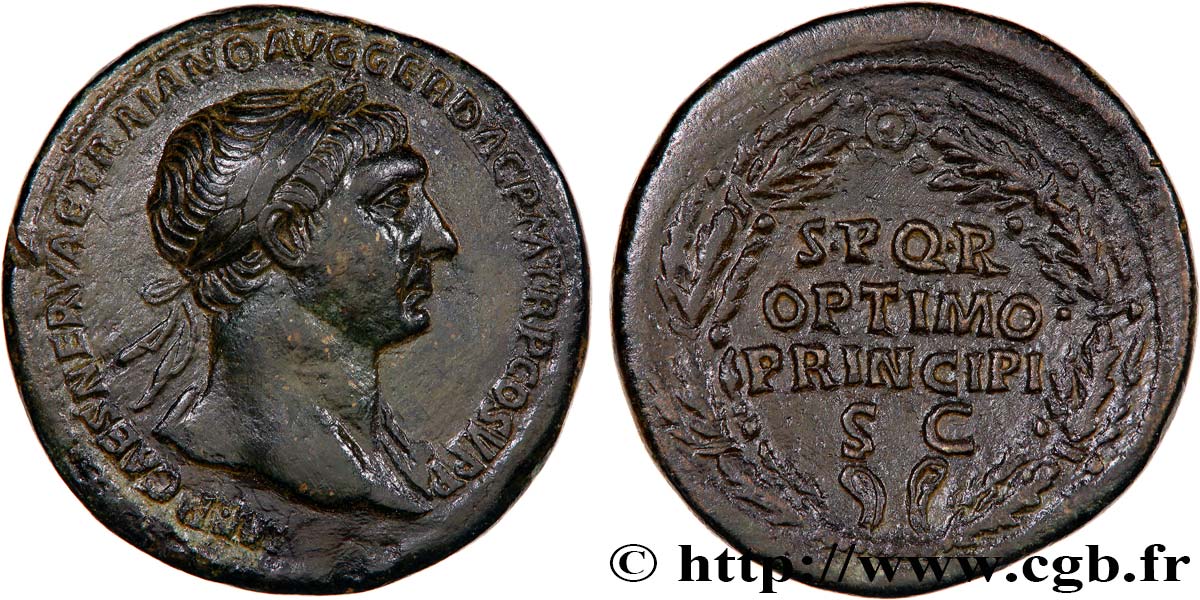
 Report a mistake
Report a mistake Print the page
Print the page Share my selection
Share my selection Ask a question
Ask a question Consign / sell
Consign / sell
 Full data
Full data